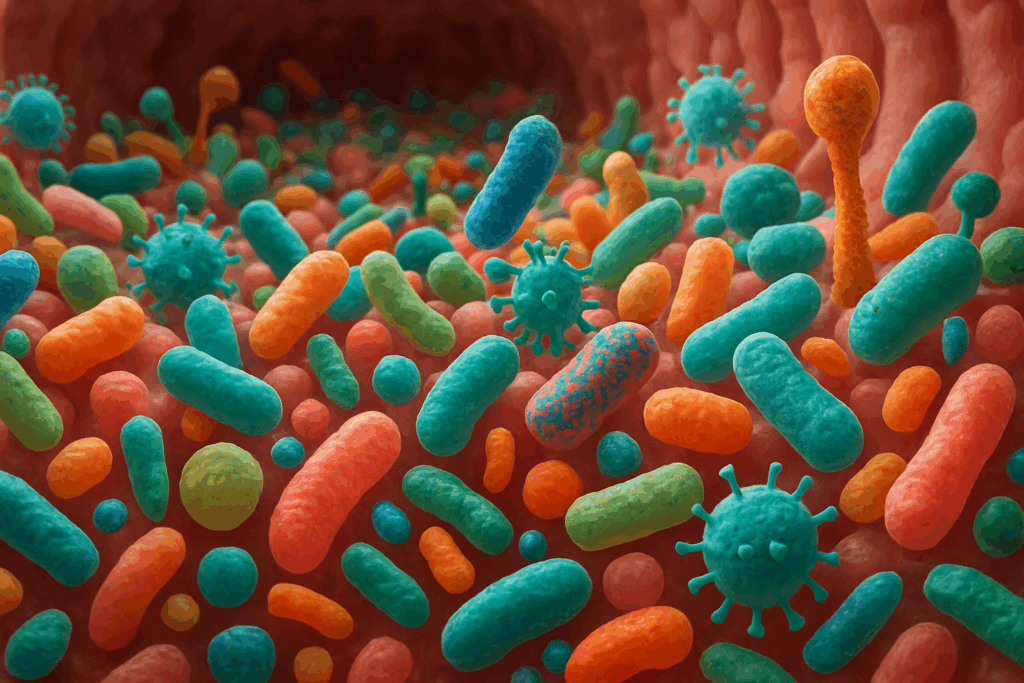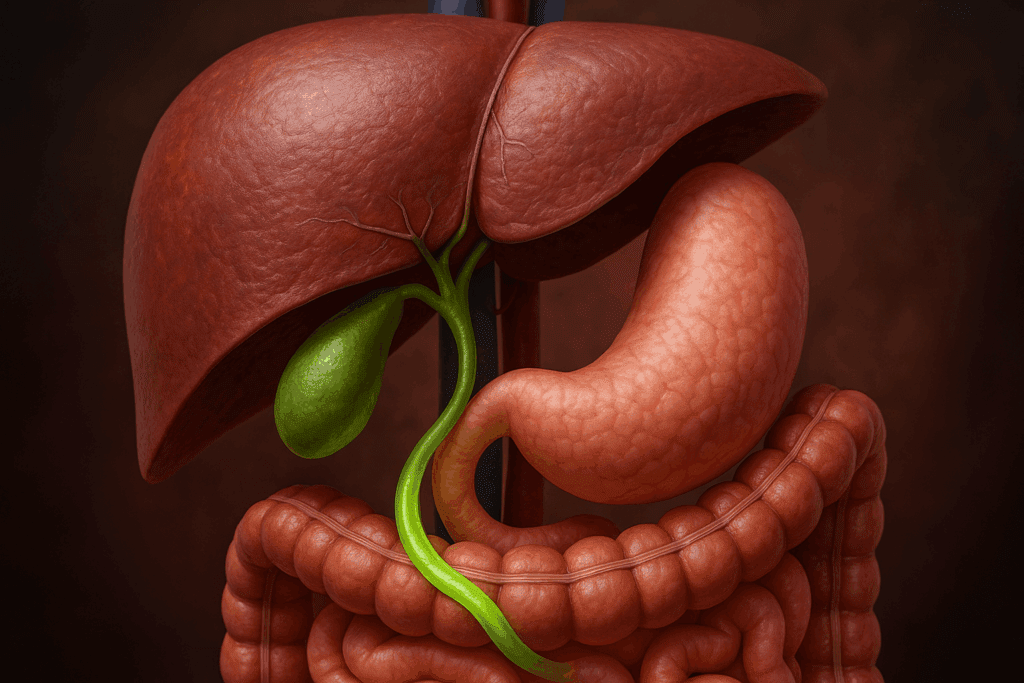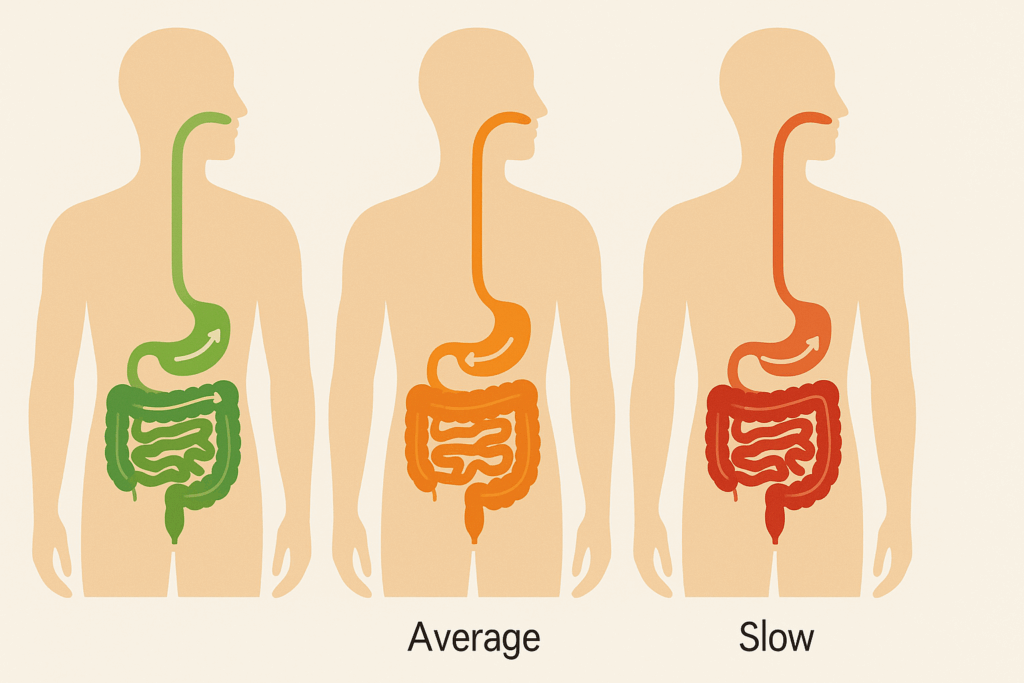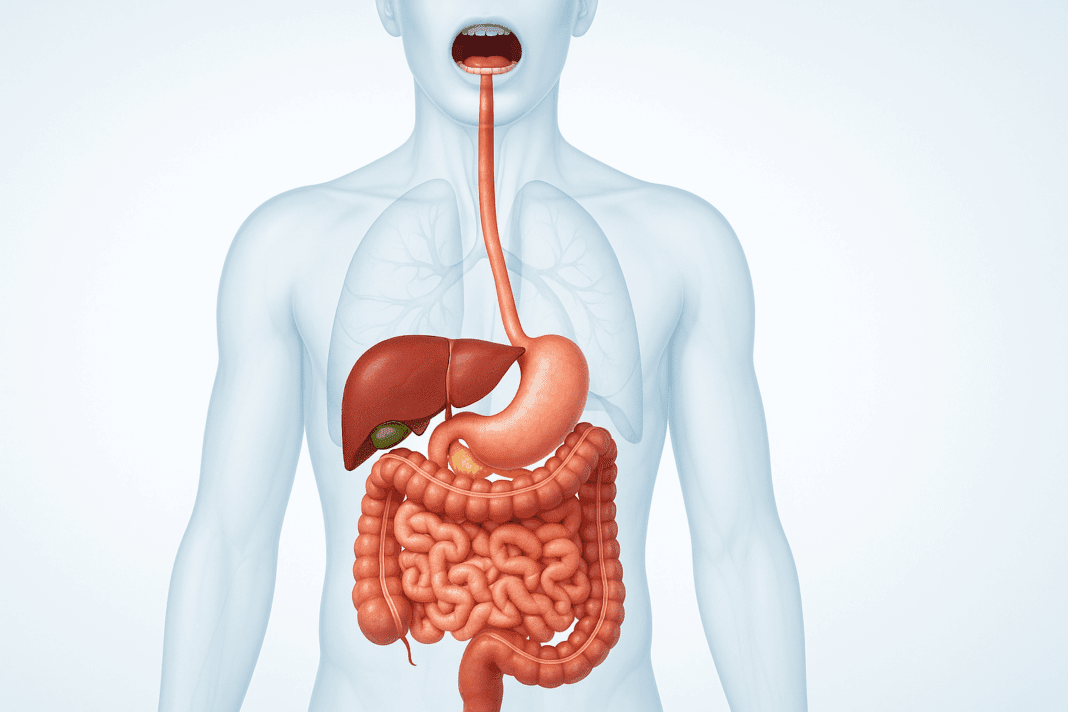The digestive system is often overlooked in favor of flashier organs like the brain or heart, yet it plays a critical role in sustaining life. From the moment food enters your mouth to the time it exits your body, the digestive system engages in a remarkable, complex process that fuels every cell. As scientists and medical professionals continue to explore this dynamic bodily system, more cool facts about the digestive system are coming to light—some of which may surprise even the most health-savvy readers. Understanding how the digestive system functions isn’t just a matter of curiosity; it’s a crucial part of optimizing health, preventing illness, and making informed dietary choices. This article explores a series of interesting facts about the digestive system, highlighting the extraordinary physiology and often underappreciated power of the gut.
You may also like: Macronutrients vs Micronutrients: What the Simple Definition of Macronutrients Reveals About Your Diet and Health
The Digestive Tract Is More Than Just a Food Pipe
When most people think of digestion, they picture food traveling down a tube, but that simplistic image doesn’t do justice to the sheer sophistication of the gastrointestinal tract. The digestive tract is a 30-foot-long system of intricately connected organs, including the mouth, esophagus, stomach, small intestine, large intestine, rectum, and anus. Each of these components performs a specialized function, synchronized with precision to maximize nutrient absorption and waste elimination. Experts emphasize that the gut’s role extends beyond digestion—it also plays a key role in immune defense, hormone regulation, and even emotional well-being.
Fun facts about the human digestive system often reveal just how multifunctional this system is. For instance, the stomach is not just a passive sac for holding food; it is a muscular organ that contracts in rhythmic waves to churn food while secreting powerful acids and enzymes. These acids can be strong enough to dissolve metal, yet the stomach protects itself with a thick lining of mucus. Meanwhile, the small intestine—often underestimated—is the primary site of nutrient absorption and stretches out to about 22 feet in length, offering ample surface area for digestion to take place.

Your Gut Has Its Own Brain
Among the most fascinating discoveries in modern gastroenterology is the presence of the enteric nervous system (ENS), often referred to as the “second brain.” This network of over 100 million neurons lines the gastrointestinal tract and operates largely independently of the central nervous system. Researchers have found that the ENS not only controls muscular contractions, enzyme secretion, and blood flow in the gut but also communicates directly with the brain via the vagus nerve. This gut-brain axis helps explain why emotions such as stress and anxiety can manifest as digestive issues, and vice versa.
According to Harvard Medical School, this gut-brain connection plays a vital role in mental health. Emerging research is delving into how gut health influences conditions such as depression and anxiety. The ENS produces many of the same neurotransmitters found in the brain, including serotonin, which regulates mood, sleep, and appetite. These cool facts about the digestive system underscore the importance of maintaining a healthy gut microbiome through diet, stress management, and lifestyle interventions.

Digestive Enzymes Are Tailored to Specific Tasks
Another of the more interesting facts about the digestive system is the specialization of digestive enzymes. These biological catalysts are produced by various organs, including the salivary glands, stomach, pancreas, and small intestine. Each enzyme targets a specific macronutrient: amylase breaks down carbohydrates, protease digests proteins, and lipase handles fats. The pancreas is particularly vital in this regard, as it secretes a powerful mix of enzymes into the small intestine to facilitate the final stages of digestion.
What makes this process so remarkable is its adaptability. The body can modulate enzyme production based on the composition of a meal. For example, a high-protein meal will trigger greater release of protease, while a fatty meal calls for more lipase. This finely tuned response system ensures optimal nutrient breakdown and absorption. Fun facts about the digestive system like this reveal how the body functions as an intelligent and responsive machine, constantly adjusting to dietary inputs and internal conditions.

The Gut Microbiome Is a Microbial Powerhouse
One of the most exciting areas of digestive health research centers on the gut microbiome—the trillions of bacteria, viruses, and fungi residing in the digestive tract, primarily in the colon. Far from being passive passengers, these microbes perform critical functions: they help digest fiber, produce vitamins like B12 and K2, regulate immune function, and even protect against harmful pathogens. The composition of the microbiome is unique to each individual and influenced by factors such as diet, genetics, environment, and antibiotic use.
Digestive system amazing facts increasingly emphasize the microbiome’s role in systemic health. A diverse and balanced microbiome has been associated with reduced risk of inflammatory diseases, obesity, type 2 diabetes, and even certain cancers. Conversely, an imbalanced microbiome—a condition known as dysbiosis—has been linked to gastrointestinal disorders such as irritable bowel syndrome (IBS) and inflammatory bowel disease (IBD). Experts recommend a fiber-rich diet, fermented foods like yogurt and kimchi, and judicious use of antibiotics to support microbial diversity and gut resilience.
Digestion Begins in the Mouth
Although the stomach often gets credit as the starting point of digestion, the process actually begins the moment food enters the mouth. Chewing not only physically breaks down food into smaller particles but also mixes it with saliva, which contains enzymes like salivary amylase that initiate carbohydrate digestion. The mechanical act of chewing also signals the stomach and pancreas to begin producing digestive juices, preparing the body for the upcoming influx of nutrients.
Fun facts about the human digestive system often overlook the mouth’s contribution, yet it sets the tone for the entire digestive sequence. Poor chewing can lead to incomplete digestion and increased strain on the stomach and intestines. Dental health also plays a crucial role; infections or imbalances in the oral microbiome can impact systemic inflammation and gut health. Thus, proper oral hygiene, mindful eating, and sufficient chewing time are foundational practices for promoting optimal digestion.
Hydration Is Essential for Smooth Digestion
Water may not be classified as a nutrient in the traditional sense, but it is indispensable to the digestive process. It helps dissolve soluble fiber, softens stool, supports enzymatic activity, and maintains the mucus lining that protects the gastrointestinal tract. Dehydration can slow down digestion, leading to constipation and discomfort, while adequate hydration facilitates the smooth movement of food through the intestines via peristalsis.
Experts recommend drinking water throughout the day rather than relying solely on beverages consumed during meals. Surprisingly, one of the lesser-known cool facts about the digestive system is that water is absorbed primarily in the small intestine, not the stomach. Maintaining hydration supports not only gastrointestinal health but also enhances nutrient absorption, circulatory function, and detoxification through the kidneys. These interrelated systems highlight the body’s reliance on water for equilibrium and efficiency.

The Liver and Gallbladder Are Digestive MVPs
While the stomach and intestines often steal the spotlight, the liver and gallbladder perform indispensable roles in digestion. The liver produces bile, a greenish fluid essential for breaking down fats into absorbable components. The gallbladder stores and concentrates this bile, releasing it into the small intestine when needed. Without bile, the body would struggle to absorb fat-soluble vitamins such as A, D, E, and K, all of which are crucial for immune function, bone health, and cellular repair.
This coordination between organs illustrates one of the most fascinating facts about the digestive system: it operates not as isolated parts but as an integrated network. When the gallbladder is removed due to gallstones or inflammation, the liver compensates by secreting bile directly into the intestine. However, the concentration of bile is less regulated, sometimes leading to fat malabsorption. Understanding this system underscores the importance of balanced fat intake and the critical roles played by these often-overlooked organs.

Gut Transit Time Varies Widely
Not all digestive systems work at the same pace. Gut transit time—the time it takes for food to move from ingestion to excretion—can vary significantly among individuals. On average, it takes about 24 to 72 hours for food to complete its journey through the digestive tract. Factors such as fiber intake, hydration, physical activity, stress, and microbiome composition all influence this timeline.
This variability offers insights into digestive efficiency and potential health issues. A rapid transit time may prevent the full absorption of nutrients, while a slow transit time can result in constipation, bloating, and increased risk of toxin reabsorption. Among the more fun facts about the digestive system is that the body uses peristaltic waves—coordinated muscle contractions—to move food along, much like a toothpaste tube being squeezed. Tracking one’s transit time can be an effective tool for identifying digestive irregularities and tailoring diet and lifestyle interventions accordingly.
Stomach Growling Is a Real Physiological Signal
Stomach growling, medically known as borborygmi, isn’t just a sign of hunger. It’s the sound of gas and fluids moving through the intestines as the digestive system continues its work, even between meals. These noises result from peristalsis, and while they are often associated with hunger, they occur regularly throughout the day regardless of food intake.
Among the more entertaining yet educational fun facts about the digestive system is that these sounds are more likely to occur when the stomach is empty because there is less content to muffle them. However, excessive growling or associated discomfort may indicate issues such as gas buildup, food intolerances, or even bacterial overgrowth. Experts advise that regular, mild stomach sounds are normal, while new or distressing noises warrant medical evaluation, especially if accompanied by changes in digestion or appetite.
Fiber Is the Unsung Hero of Digestive Health
Fiber, particularly dietary fiber from plant sources, is essential for maintaining digestive health. It adds bulk to stool, promotes regular bowel movements, feeds beneficial gut bacteria, and helps regulate blood sugar and cholesterol levels. Yet, despite its importance, many people fall short of the recommended daily fiber intake of 25 to 38 grams.
Interesting facts about the digestive system often highlight the impact of fiber on gut motility and microbial health. Soluble fiber, found in foods like oats and legumes, dissolves in water to form a gel that slows digestion and supports nutrient absorption. Insoluble fiber, found in whole grains and vegetables, adds roughage that moves waste efficiently through the colon. A diet rich in both forms of fiber fosters a robust digestive environment and supports long-term wellness.
The Gut Changes with Age and Lifestyle
The digestive system is not static; it evolves with age and is influenced by lifestyle habits. As people grow older, the production of digestive enzymes may decline, gut motility may slow, and the risk of gastrointestinal disorders may increase. Additionally, stress, poor diet, sedentary behavior, and overuse of medications like antacids and antibiotics can impair digestive function.
Cool facts about the digestive system underscore its adaptability but also its vulnerability. The good news is that many age-related digestive changes can be mitigated with proactive care. Nutritionists and gastroenterologists recommend a diet rich in whole foods, regular physical activity, stress reduction techniques, and periodic medical evaluations to support digestive health throughout the lifespan.
The Digestive System as a Window to Overall Health
The condition of the digestive system often reflects broader aspects of health. Changes in bowel habits, appetite, or energy levels can signal underlying conditions that warrant attention. Even skin problems, fatigue, and mood disturbances have been linked to digestive imbalances. As science uncovers more digestive system amazing facts, the gut is increasingly recognized as a central player in whole-body health.
Medical professionals urge individuals to take digestive symptoms seriously rather than dismissing them as minor inconveniences. Regular screenings for colorectal cancer, attention to food intolerances, and timely management of gastrointestinal conditions can improve quality of life and prevent serious complications. The digestive system is not just about food; it is about functionality, balance, and resilience.
Frequently Asked Questions: Deepening Your Understanding of the Digestive System
1. How does the digestive system adapt to different diets across cultures and environments?
One of the most intriguing yet lesser-known facts about the digestive system is its remarkable adaptability to varying dietary traditions around the world. For instance, populations with diets rich in seaweed, such as in Japan, host gut bacteria that have evolved to digest marine carbohydrates more efficiently. This flexibility reveals how the microbiome changes based on long-term dietary exposure, even incorporating new enzymes acquired from the environment. These fun facts about the human digestive system demonstrate not only biological resilience but also an evolutionary partnership between humans and microbes. Understanding these adaptations sheds light on why personalized nutrition—based on genetics, lifestyle, and microbiome profiling—is becoming a growing field in digestive health.
2. Can psychological stress permanently alter digestive function?
Chronic stress can do more than just trigger temporary digestive upset; it can induce lasting changes in gut physiology. Long-term exposure to stress hormones like cortisol can weaken the intestinal lining, increase inflammation, and even alter gut motility. These changes may contribute to disorders like irritable bowel syndrome (IBS) and functional dyspepsia. While stress itself doesn’t rewrite anatomy, the cumulative effect on gut-brain signaling makes this one of the most overlooked yet clinically important cool facts about the digestive system. Addressing stress through cognitive behavioral therapy, mindfulness, and physical activity can significantly improve digestive outcomes.
3. How do circadian rhythms influence digestion and gut health?
Emerging research shows that your digestive system has its own circadian rhythm, and disrupting this rhythm—such as through late-night eating or irregular sleep—can impair digestion. These internal clocks regulate enzyme secretion, gut motility, and even microbiota composition. Among the most exciting digestive system amazing facts is that eating at consistent times each day helps synchronize these rhythms, supporting better metabolic health. Jet lag, shift work, or erratic meal patterns may increase the risk of metabolic disorders through digestive dysregulation. Practical applications include time-restricted eating and prioritizing meals during daylight hours to align with circadian function.
4. What are some surprising environmental factors that affect digestion?
Beyond diet and hydration, several lesser-discussed environmental factors can influence digestive health. Air quality, for example, plays a role in gut inflammation, as inhaled pollutants can enter circulation and impact the intestinal barrier. Exposure to green spaces, meanwhile, has been associated with greater microbial diversity—one of the more interesting facts about the digestive system that links nature to gut health. Even household cleaning products, through their antimicrobial properties, can disrupt your gut flora by reducing microbial exposure. Understanding these dynamics emphasizes the importance of a holistic lifestyle approach to gut wellness, one that extends beyond just food.
5. How does the digestive system influence bone health?
A growing body of evidence suggests a strong connection between the gut and skeletal system. Gut bacteria help metabolize nutrients like calcium, magnesium, and vitamin D—critical for bone density. Disruption of the microbiome can therefore indirectly weaken bones, especially in older adults or individuals with chronic inflammation. These fun facts about the digestive system highlight its role as a silent regulator of structural health. In clinical settings, supporting digestive function is now being explored as a complementary strategy to prevent or manage osteoporosis.
6. Are there any benefits to fasting for the digestive system?
Intermittent fasting has gained popularity not only for metabolic benefits but also for its impact on gut health. During fasting periods, the digestive tract gets a much-needed rest, allowing the gut lining to repair and inflammation to decrease. Fascinatingly, fasting can also increase microbial diversity and stimulate the release of beneficial short-chain fatty acids once eating resumes. These digestive system amazing facts reflect a shift toward viewing digestion as a rhythm that thrives on balance—not constant stimulation. However, fasting should be approached with medical guidance, particularly for individuals with gastrointestinal conditions or blood sugar regulation issues.
7. What are postbiotics, and how do they relate to digestive health?
While probiotics and prebiotics have been in the spotlight, postbiotics—the metabolic byproducts of gut bacteria—are now gaining attention for their therapeutic potential. These substances, such as short-chain fatty acids and antimicrobial peptides, help regulate inflammation, strengthen the gut barrier, and influence immune function. One of the newer cool facts about the digestive system is that you don’t always need to introduce new microbes; sometimes, fostering the right microbial environment to produce these compounds is just as effective. Postbiotics are now being explored as possible treatments for conditions like ulcerative colitis and metabolic syndrome.
8. How does aging specifically change the gut-brain connection?
With age, the communication between the gut and brain can become less efficient due to changes in nerve sensitivity, reduced neurotransmitter production, and shifts in microbiota composition. These alterations may contribute to both cognitive decline and increased risk of gastrointestinal issues such as constipation or indigestion. Understanding these age-related changes introduces one of the more important yet often overlooked fun facts about the digestive system—its role in healthy aging and cognitive resilience. Supporting the gut-brain axis with fermented foods, omega-3s, and cognitive engagement can help preserve this intricate communication pathway over time.
9. How can digestive health influence vaccine effectiveness?
A surprising area of study involves the influence of gut health on the body’s immune response to vaccines. Certain microbial species help regulate how well the body recognizes and responds to antigens. In fact, some studies have shown that a more diverse gut microbiome can improve antibody production post-vaccination. This connection adds to the collection of interesting facts about the digestive system that underscore its role beyond nutrient absorption. Especially in global health contexts, optimizing gut health is becoming part of public health strategies to improve vaccine efficacy and reduce infectious disease risk.
10. What role does the gut play in regulating appetite beyond hormones?
While hormones like ghrelin and leptin often get the spotlight, the gut also communicates satiety through mechanical and neural pathways. Stretch receptors in the stomach and intestines send real-time feedback to the brain about meal volume and nutrient content. Moreover, gut bacteria produce signaling molecules that can modulate appetite and even food preferences over time. These fun facts about the digestive system suggest that fullness is not just a matter of willpower or calories—it’s a highly coordinated physiological event. Understanding these mechanisms can lead to more personalized approaches to appetite management and weight control.
Reflecting on What We Know: Why These Fun Facts About the Digestive System Matter
Understanding these fun facts about the digestive system is more than a matter of trivia—it’s a foundation for making informed choices that support lifelong health. From the brain-like activity of the enteric nervous system to the powerhouse functions of the microbiome, each element of the digestive system works in tandem to nourish the body, regulate immunity, and stabilize mood. These cool facts about the digestive system reveal not only the complexity but also the elegance of our internal processes.
By embracing the latest science and expert-backed insights, individuals can make dietary and lifestyle changes that enhance digestive performance and overall well-being. Whether it’s increasing fiber intake, staying hydrated, chewing food thoroughly, or supporting the gut-brain axis, every small action contributes to a healthier, more efficient digestive system. And in doing so, we not only improve digestion but also elevate our entire state of health.
As we continue to uncover more interesting facts about the digestive system through research and clinical practice, one truth becomes clear: the gut is far more than a food processor. It is a dynamic, intelligent, and vital part of who we are. Prioritizing digestive health is not just about comfort or convenience—it’s a commitment to living better, feeling stronger, and thriving in every aspect of life.
Further Reading:
Gut Check: Fun Facts About Your Digestive System
15 Interesting Facts About Your Digestive System
19 Fun Facts About the Digestive System


